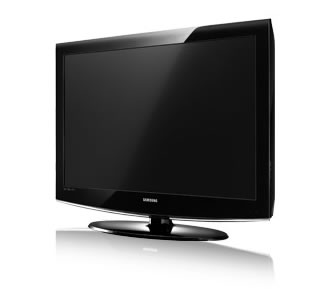|

New Year's Resolution – Do you Need 1080p to watch High Def?By Jim Bray The price of full, 1080p compliant TV's are falling rapidly, making them more affordable and attractive all the time. But with 720p screens even more affordable, do you really need the extra pixels to enjoy HD at home? Yes, and no. 1080p is definitely the way to go if you have the budget and the room, but you can still enjoy extremely high quality images on a more inexpensive flat panel – even if you watch Blu-ray discs on it. This was brought home to me over the Christmas, 2008, season when my wife and I went into a major department store looking for a dish washer for our son (which would have been a fair trade, indeed!). As I always do, I returned the favor of being dragged shopping by dragging her into the electronics department, where we happened across a Samsung 37 inch panel that was being blown out for half its original list price. We hadn't really been looking for a new TV, but my wife has wanted to get rid of the humongous 36 inch 480i (4x3 aspect ratio) CRT we've been using in our living room for more than a decade in favor of something that can be moved by fewer than four husky people. The deal on the Samsung was a no lose situation, allowing us to drag our living room's video potential into the not-so-new millennium cheaply. There's no HD television signal going to that room and isn't likely to be, so I wasn't worried about having "real" HD there (we have a 106 inch 1080p home theater, thanks to our Epson LCD front projector, for viewing HDTV broadcasts, Blu-ray discs and up converted DVD's). I merely wanted to bring the widescreen experience to the living room, with the added bonus of watching DVD's up converted to 720p – altogether a huge improvement over what we'd had and a better match for the Rotel-powered JBL-equipped 5.1 audio system there. I admit that I thought I'd miss 1080p, since I've been enjoying it so much in our big, reference home theater. I was wrong; I haven't missed it a whit. 720p offers a substantially lower pixel count than 1080p and therefore in theory isn't nearly as good. A widescreen 720p TV displays a resolution of 1280 x 720 compared to 1920 x 1080 for 1080p: 921,600 pixels versus 2,073,600, a substantial difference. But does that matter in the real world? Naturally, it depends. I can see the difference on our 106 inch screen when I run 720p and 1080p output, but at 37 inches of screen size viewed from across the room I doubt I'd see much difference – and it's moot anyway since there are no 1080p signals going to the TV on a regular basis anyway. And 720p does just fine for DVD's. Even a 720p picture can be darn compelling, as I discovered a couple of years ago when I tested my first up converting DVD player. To test this with the Samsung, I plugged my PS3 into it, switched the player's output to 720p, and tried a few Blu-ray discs. The result was spectacular. Blu-rays of Wild China, Casablanca, and Starship Troopers looked fabulous, with rich and deep color (well, except for Casablanca!), excellent contrast and even quite a bit of that nearly 3D-like "depth" you can get from some of the better Blu-rays. Conventional DVD's up converted via our OPPO DVD player also looked terrific on the Samsung. I ran a variety of discs, including one of my favorite reference DVD's (Lord of the Rings: The Return of the King) and was very impressed. As a confirmed video snob, I had expected to hold my nose and accept the reduced quality as the price paid for low cost, but having now watched varying content for a few weeks I feel there has been no sacrifice at all: the 720p picture works beautifully in that environment. I'm so relieved! Where does 1080i come in this mix? Most HDTV broadcasts these days are supposedly in 1080i, which offers the same pixel count as 1080p, but with a picture that's "interlaced" – displayed half a frame at a time very rapidly (even pixels, then odd ones, line by line), and this can lead to some flicker effects and a picture that isn't as smooth, especially during scenes of fast motion. But today's digital flat panel and projection TV's are generally either 720p or 1080p (many converting interlaced signals internally to their native resolution, with others displaying native 1080i), so 1080i will display well on any modern HDTV and is basically a non-issue for this piece. So back to the 720p versus 1080p riddle. It has been said that you only need 1080p for displays of 50 inches or larger and this seems to make sense. A CNET article I read while researching this piece agreed with that scenario (though it used 55 inches as its threshold) while also suggesting that 1080p may come in handy if you sit very close to your TV, at which point a 720p set may show some pixelization that could be ameliorated by the more densely packed pixels of a 1080p. That also makes sense. But if you're installing a second TV that won't be used for your critical watching, if you're building a smaller and more intimate home theater – or even if times are a little tight and you could use a bit of a break on your TV dollars spent – a good 720p compliant TV can do the job for you more than adequately – and chances are you'll never notice the "lost" pixels. And for those of you who bought 720p TV's and whose friends are going "nyah nyah" because they bought new 1080p models, you may be having the last laugh thanks to the money you saved or the extra time you've had enjoying the TV while your friends were waiting for the prices to come down or the technology to mature. Copyright 2009 Jim Bray Jim Bray's columns are available through the TechnoFile Syndicate. We welcome your comments! |
|
|||

